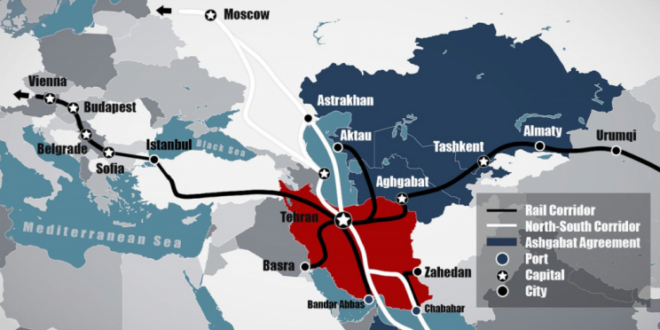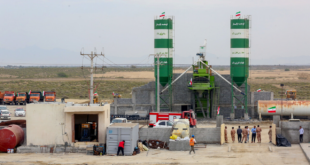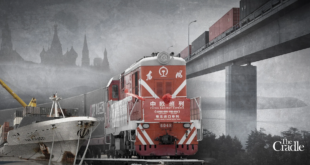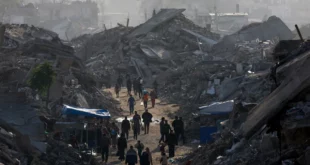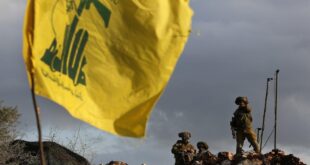Against the backdrop of another conflict in Palestine, the news that Saudi Arabia suspended negotiations with Israel became the reason for a broader interpretation of events affecting the interests of India, Iran, the EU, Russia and China. Although wars in the Middle East have always affected the whole world, especially the Eurasian region, in a certain way, this case is indeed connected with the plans of a number of states regarding both Israel and Saudi Arabia.
Just a few days before the Hamas attack, the White House confirmed that almost all issues regarding the normalization of relations between Saudi Arabia and Israel had already been resolved, and some nuances related to Iran remained to be agreed upon.
On the part of Saudi Arabia there were two conditions: gaining access to nuclear technology and improving the socio-economic conditions of the Palestinians, which directly depended on Israel. Now the Palestinian issue has become the cornerstone of this bargaining – and Hamas has practically ruined this deal. At the same time, the collective West was interested in another project in the field of geo-economics – the creation of another transport corridor, where Saudi Arabia and Israel were the key sections.
India-Middle East-EU corridor
This agreement was reached during the G20 summit in New Delhi. According to a White House fact sheet , the leaders of the United States, India, Saudi Arabia, the United Arab Emirates, France, Germany, Italy and the European Union signed a Memorandum of Understanding agreeing to create a new India-Middle East-EU Economic Corridor (IMEC).
In addition to rail links and shipping lines, it was planned to lay high-speed data cables and energy pipelines. They would complement existing maritime and road networks to improve the flow of goods and services to and between these countries.
From a geopolitical point of view, the India-Middle East-EU corridor has come to be seen as a competitor to the Chinese Belt and Road Initiative. The US and EU countries probably harbored such hopes, although the Chinese initiative covers more than 150 countries, and about 30 international organizations have joined. Saudi Arabia and Israel are also part of the Chinese initiative. Therefore, we can hardly talk about real competition.
As for India, it initially opposed the Belt and Road because its main component, the China-Pakistan Economic Corridor, passes through the disputed territory. It was important for New Delhi to create an alternative route to EU countries, since now the entire flow of goods goes through the Suez Canal. In addition, in 2003, the Indian conglomerate Adani Group acquired the port of Haifa in Israel, and relations between India and Israel have been quite productive in recent years in a variety of areas.
Italy’s withdrawal from the Chinese initiative indicates skepticism on the part of European countries, which are increasingly fearful of the growing power of China, following Washington’s political line.
Meanwhile, in addition to the so far failed India-Middle East-Europe and Belt and Road projects, there are other alternatives to organizing routes and logistics. And they have their stakeholders and opponents, as is the case with the two mentioned.
Middle corridor
The day before, Azerbaijani President Ilham Aliyev visited Georgia, where at a meeting with Prime Minister Irakli Garibashvili he confirmed the importance of the Middle Corridor and participation in it. The issue was raised about resuming the construction of a new deep-sea port in Anaklia, as well as the development of other transport infrastructure.
This initiative was officially created in 2013 by Kazakhstan, Azerbaijan and Georgia, but began to gain momentum relatively recently. There is an international association “Trans-Caspian International Transport Route”, which is the operator of this project.
At the next meeting on September 28–29, 2023 in Aktau, an Agreement was signed on interaction and liability measures when organizing the transportation of goods as part of container trains along the TMTM route using feeder vessels and an Agreement on the organization of container transportation in direct international rail-sea traffic with the participation of feeder vessels ships between the ports of the Caspian Sea (Aktau – Baku-Alyat). The following companies were also accepted as members: Alport (Azerbaijan), BMF Port Burgas (Bulgaria), Semurg Invest (Kazakhstan), LTG Cargo (Lithuania), Global DTC Pte.Ltd (Singapore) and Eastcomtrans LLP (Kazakhstan). Thus, the composition of the Association has increased to 25 companies and is represented by 11 countries.
Although the Middle Corridor currently accounts for less than 10% of the total volume of cargo transported along the Northern Route (that is, through Russian territory), due to the limited capacity of seaports and railways, the absence of a single tariff structure and a single operator. At the moment, the countries participating in the TMTM have set themselves the goal of increasing the throughput of the Middle Corridor to 10 million tons per year by 2025.
Among the advantages of the Middle Corridor, it is noted that it is 2000 kilometers shorter than the Northern Corridor passing through Russia. This reduces travel time from China to Europe to 12 days, compared with 19 days along the Northern Corridor. The Middle Corridor will also be able to reduce the risks of sanctions associated with transit through Russia. Of course, this opens up access to new markets with a population of approximately 80 million along the route.
The Middle Corridor also provides an opportunity to increase energy exports from Central Asia to Europe. For example, Kazakhstan intends to ship 1.5 million tons of oil this year (2-3% of its oil exports) to Europe via the Middle Corridor.
The two initiatives discussed have one thing in common. As in the case of the India-Middle East-EU corridor, this route bypasses Russia. However, the Middle Corridor includes China. On May 19, 2023, Xi Jinping met with five Central Asian leaders during the China-Central Asia Summit, where they discussed the launch of the China-Kyrgyzstan-Uzbekistan railway and the construction of several highways that will play an integral role in the Middle Corridor.
Turkey is trying to use its geostrategic importance to become a bridge between the EU on the one hand and the countries of the Caucasus – Central Asia and China on the other.
Under an optimistic development scenario, the Middle Corridor is projected to increase transit capacity to 50 million tonnes, complementing China’s Iron Silk Road vision alongside Turkey’s growing regional influence. However, Turkey also plays a critical role as an intermediary in the European value chain due to its geographical structure.
However, Turkish President Erdogan recently announced plans to create an alternative trade corridor and is considering joint use of the Iraq Development Road project as an alternative route. Now Turkey’s share in the Iraqi economy is already quite significant.
North South
Finally, there is the International North-South Transport Corridor, in which India also participates. Other key players are Iran and Russia, through whose territory this route runs.
This route has been discussed for quite some time, but only this year concrete results were visible, both in terms of ferry traffic across the Caspian Sea and in relation to the completion of the construction of the Azerbaijan-Iran railway section. At the same time, it may have a number of branches, in particular, a sea section from Iran to Saudi Arabia (cargo from Russia has already been transported along it), as well as a railway line from Iran to Turkmenistan and further to the countries of Central Asia. In the future, it is also possible to create an additional horizontal dimension that will cover Afghanistan and Pakistan (including the revival of the TAPI energy gas pipeline).
Turkey could also connect to this corridor, since it has a common border with Iran, but is in no hurry to do so.
The Russian position on the implementation of this route is optimistic (even the Middle Corridor can be mutually beneficial), but not proactive enough. After all, we have only reached concrete decisions and results now, under the sanctions regime, although this could have been done much easier earlier.
In addition, given Kazakhstan’s fear of falling under secondary sanctions, it is unlikely that Russia’s interests will be taken into account there. Rather, on the contrary, Kazakhstan will try to advertise the Middle Corridor in order to diversify its logistics capabilities.
To sum up, we can conclude that the Belt and Road will continue to develop along the planned trajectory. The middle path may pose a certain risk for Russia of losing part of the transit. The India-Middle East-EU corridor remains unrealistic for now. And North-South is the most promising from the point of view of Russia’s interests. The Iranian and Russian economies are becoming interconnected (and on the eve of Iran’s accession to the EAEU, this is important). Contacts with India continue to develop, which balances the Chinese vector. And the development of this transport corridor will attract other countries in the region to use it. In addition, it does not carry serious risks, as is the case with the proposed hub in the Middle East. Russia and Iran are strategic partners who are interested in the formation of a multipolar world order. India is also seeking to change the current order. But Washington’s clients, such as Israel, or ambitious players, such as Turkey, are not key participants in this project. Although it must be taken into account that the West will try to put a spoke in the wheels in order to in every possible way impede the work of the North-South corridor. Attempts to quarrel between Azerbaijan and Iran, as well as various accusations against Tehran by the United States are directly related to this and are aimed at isolating Iran.
 Eurasia Press & News
Eurasia Press & News
